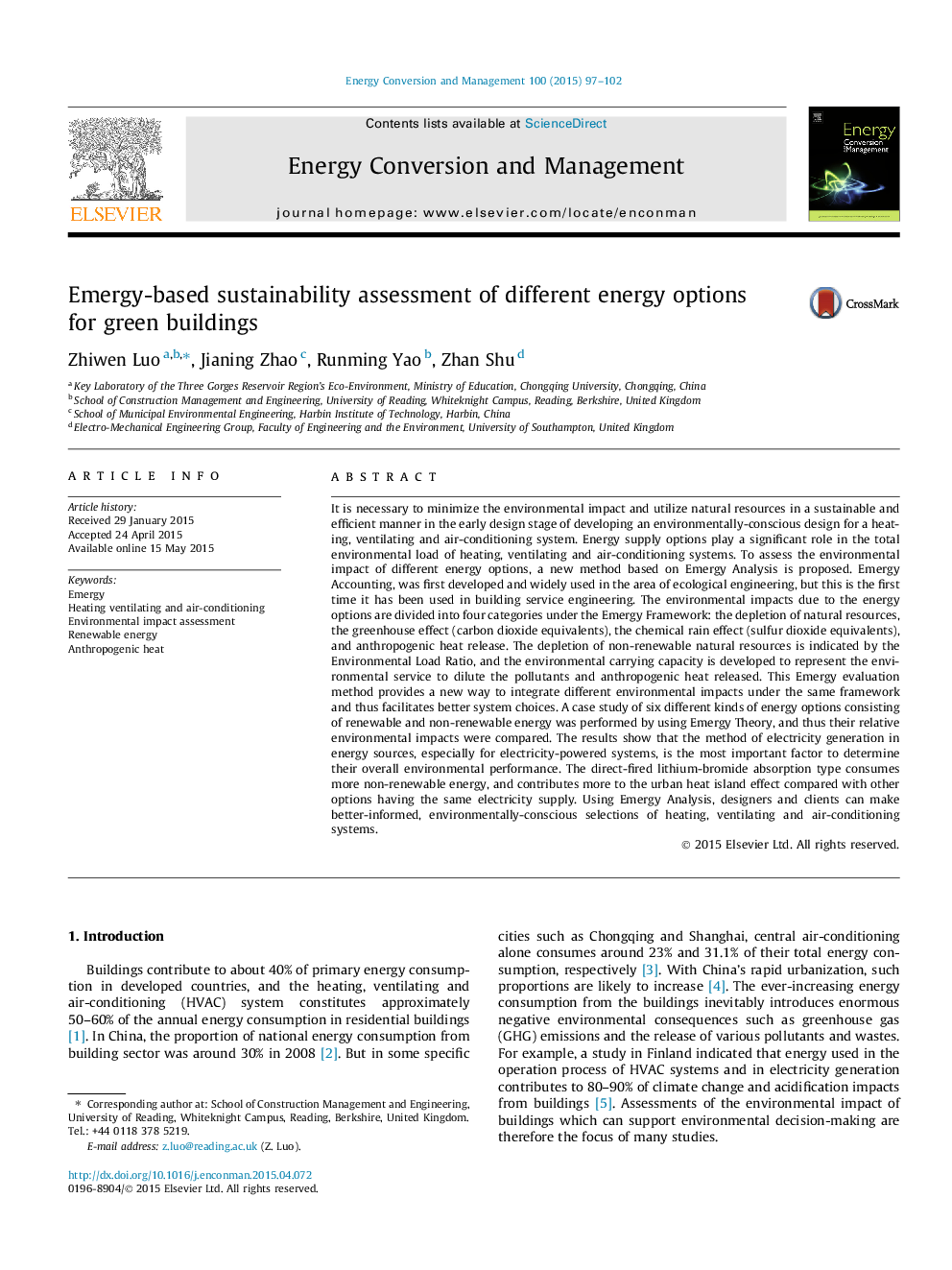| کد مقاله | کد نشریه | سال انتشار | مقاله انگلیسی | نسخه تمام متن |
|---|---|---|---|---|
| 763710 | 1462862 | 2015 | 6 صفحه PDF | دانلود رایگان |
• We apply Emergy to assess environmental impact of different energy options.
• We develop a new index to assess the anthropogenic heat emission.
• The way of electricity produced is crucial to the total environmental load.
• The direct-fired lithium-bromide absorption type shows highest environmental load.
It is necessary to minimize the environmental impact and utilize natural resources in a sustainable and efficient manner in the early design stage of developing an environmentally-conscious design for a heating, ventilating and air-conditioning system. Energy supply options play a significant role in the total environmental load of heating, ventilating and air-conditioning systems. To assess the environmental impact of different energy options, a new method based on Emergy Analysis is proposed. Emergy Accounting, was first developed and widely used in the area of ecological engineering, but this is the first time it has been used in building service engineering. The environmental impacts due to the energy options are divided into four categories under the Emergy Framework: the depletion of natural resources, the greenhouse effect (carbon dioxide equivalents), the chemical rain effect (sulfur dioxide equivalents), and anthropogenic heat release. The depletion of non-renewable natural resources is indicated by the Environmental Load Ratio, and the environmental carrying capacity is developed to represent the environmental service to dilute the pollutants and anthropogenic heat released. This Emergy evaluation method provides a new way to integrate different environmental impacts under the same framework and thus facilitates better system choices. A case study of six different kinds of energy options consisting of renewable and non-renewable energy was performed by using Emergy Theory, and thus their relative environmental impacts were compared. The results show that the method of electricity generation in energy sources, especially for electricity-powered systems, is the most important factor to determine their overall environmental performance. The direct-fired lithium-bromide absorption type consumes more non-renewable energy, and contributes more to the urban heat island effect compared with other options having the same electricity supply. Using Emergy Analysis, designers and clients can make better-informed, environmentally-conscious selections of heating, ventilating and air-conditioning systems.
Journal: Energy Conversion and Management - Volume 100, August 2015, Pages 97–102
